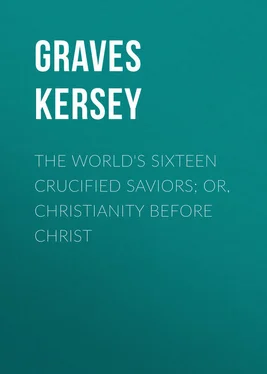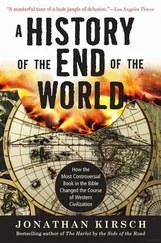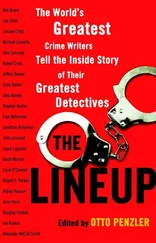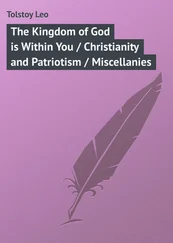Kersey Graves - The World's Sixteen Crucified Saviors; Or, Christianity Before Christ
Здесь есть возможность читать онлайн «Kersey Graves - The World's Sixteen Crucified Saviors; Or, Christianity Before Christ» — ознакомительный отрывок электронной книги совершенно бесплатно, а после прочтения отрывка купить полную версию. В некоторых случаях можно слушать аудио, скачать через торрент в формате fb2 и присутствует краткое содержание. Издательство: Иностранный паблик, Жанр: foreign_religion, foreign_antique, foreign_prose, Историческая проза, на английском языке. Описание произведения, (предисловие) а так же отзывы посетителей доступны на портале библиотеки ЛибКат.
- Название:The World's Sixteen Crucified Saviors; Or, Christianity Before Christ
- Автор:
- Издательство:Иностранный паблик
- Жанр:
- Год:неизвестен
- ISBN:нет данных
- Рейтинг книги:4 / 5. Голосов: 1
-
Избранное:Добавить в избранное
- Отзывы:
-
Ваша оценка:
- 80
- 1
- 2
- 3
- 4
- 5
The World's Sixteen Crucified Saviors; Or, Christianity Before Christ: краткое содержание, описание и аннотация
Предлагаем к чтению аннотацию, описание, краткое содержание или предисловие (зависит от того, что написал сам автор книги «The World's Sixteen Crucified Saviors; Or, Christianity Before Christ»). Если вы не нашли необходимую информацию о книге — напишите в комментариях, мы постараемся отыскать её.
The World's Sixteen Crucified Saviors; Or, Christianity Before Christ — читать онлайн ознакомительный отрывок
Ниже представлен текст книги, разбитый по страницам. Система сохранения места последней прочитанной страницы, позволяет с удобством читать онлайн бесплатно книгу «The World's Sixteen Crucified Saviors; Or, Christianity Before Christ», без необходимости каждый раз заново искать на чём Вы остановились. Поставьте закладку, и сможете в любой момент перейти на страницу, на которой закончили чтение.
Интервал:
Закладка:
If the credibility of the relation of these incidents going to prove an astonishing coincidence in the sacred histories of the Hindoo and Christian Saviors, and demonstrating the doctrine of the crucifixion as having been practically realized, and preached to the world long anterior to the offering of a God "once for all" on Mount Calvary; if its credibility rested on mere ex parte testimony, mere pagan tradition, or even upon the best digested and most authentic annals of the past that have escaped the ravages of time, there might still be a forlorn hope for the stickler for the Christian faith now struggling in the agonies of a credal skepticism, that the whole thing has been plagiarized from the Christian Gospels. For paper and parchment history can be – and has been – mutilated. But the verity of this account rests upon no such a precarious basis. Its antiquity, reaching far beyond the Christian era, is corroborated and demonstrated by imperishable monuments, deep-chiseled indentures burrowed into the granite rock, which bid defiance to the fingers of time, and even the hands of the frenzied iconoclast, to destroy or deface, though impelled and spurred on to the effort by the long-cherished conviction burning in his soul, that the salvation of the human race depends upon believing that "there is no other name given under heaven whereby men can be saved" than his own crucified God, and that all others are but thieves, robbers and antichrists. Some of the disciples of the oriental systems cherished this conviction, and Christians and Mahommedans seem to have inherited it in magnified proportions.
Hence, we are credibly informed that some of the earlier Christian saints, having determined, like Paul, "to know only Jesus Christ and him crucified," made repeated efforts to obliterate these sacred facts (so fatally damaging to their one-sided creeds) from the page of history. Mr. Higgins suggests that if we could have persons less under the influence of sectarian prejudice to visit, examine, and report on the sculptures and monuments of India, covered over as they are with antiquated and significant figures appertaining to and illustrating their religious history, we might accumulate still more light bearing upon the history of the crucifixion of the Savior and sin-atoning Chrishna. "Most of our reports," he declares, "are fragmentary, if not one-sided, having come through the hands of Christian missionaries, bishops and priests."
He informs us that a report on the Hindoo religion, made out by a deputation from the British Parliament, sent to India for the purpose of examining their sacred books and monuments, being left in the hands of a Christian bishop at Calcutta, and with instructions to forward it to England, was found, on its arrival in London, to be so horribly mutilated and eviscerated as to be scarcely cognizable. The account of the crucifixion was gone – cancelled out. The inference is patent.
And we have it upon the authority of this same reliable and truthful writer (Sir Godfrey Higgins) that the author of the Hindoo Pantheon (Mr. Moor), after having announced his intention to publish it to the world, was visited and labored with by some of his devout Christian neighbors zealous "for the faith once delivered to the saints," who endeavored to dissuade him from publishing such facts to the world as he represented his book to contain, for fear it would have the effect to unsettle the faith of some of the weak brethren (some of the weak-kneed church members) in the soul-saving religion of Jesus Christ, by raising doubts in their minds as to the originality of the gospel story of the crucifixion of Christ, or at least of his having been crucified as a God for a sin-offering. His crucifixion is a possible event. It may be thus far a true narrative, but the adjunct of the atonement, with its efficacy to obliterate the effects of sin, connected with the idea that an infinite, omnipotent and self-existent God was put to death, when a human form was slain upon the cross – never, no, never. It is a thought too monstrous to find lodgment in an enlightened human mind.
Another case evincing the same spirit as that narrated above is found in the circumstance of a Christian missionary (a Mr. Maurice) publishing a historical account of this man-god or demigod of the Hindoos, and omitting any allusion to his crucifixion; this was entirely left out, apparently from design. His death, resurrection and ascension were spoken of, but the crucifixion skipped over. He could not have been ignorant of this chapter in his history as the writers preceding him, from whom he copied, had related it.
Among this number may be mentioned the learned French writer Monsieur Guigniant, who, in his "Religion of the Ancients," speaks so specifically of the crucifixion of this God, as to name the circumstance of his being nailed to a tree. He also states, that before his exit he made some remarkable prophecies appertaining to the crimes and miseries of the world in the approaching future, reminding us of the wars and rumors of wars predicted by the Christian Messiah. Mr. Higgins names the same circumstance.
We have it upon the authority of more than one writer on Hindoo or Indian antiquities that there is a rock temple at Mathura in the form of a cross, and facing the four cardinal points of the compass, which is admitted by all beholders as presenting the proof in bold relief of extreme age, and inside of this temple stands a statue of "the Savior of men," Chrishna of India, presenting the proof of being coeval in construction with the temple itself by the circumstance of its being cut out of the same rock and constituting a part of the temple. (Further citations of this character will be found under the head of Parallels, Chapter XXXII.)
Thus we have the proof deeply and indelibly carved in the old, time-chiseled rocks of India – that their "Lord and Savior Chrishna" atoned for the sins of a grief-stricken world by "pouring out his blood as a propitiatory offering" while stretched upon the cross. No wonder, in view of such historic bulwarks, Col. Wiseman, for ten years a Christian missionary should have exclaimed, "Can we be surprised that the enemies of our holy religion should seize upon this legend (the crucifixion of Chrishna) as containing the original of our gospel history?"
Christian reader, please ponder over the facts of this chapter, and let conviction have its perfect work.
LIFE, CHARACTER, RELIGION, AND MIRACLES OF CHRISHNA.
The history of Chrishna Zeus (or Jeseus, as some writers spell it) is contained principally in the Baghavat Gita, the episode portion of the Mahabaret bible. The book is believed to be divinely inspired, like all other bibles; and the Hindoos claim for it an antiquity of six thousand years. Like Christ, he was of humble origin, and like him had to encounter opposition and persecution.
But he seems to have been more successful in the propagation of his doctrines; for it is declared, "he soon became surrounded by many earnest followers, and the people in vast multitudes followed him, crying aloud, 'This is indeed the Redeemer promised to our fathers.'" His pathway was thickly strewn with miracles, which consisted in healing the sick, curing lepers, restoring the dumb, deaf and the blind, raising the dead, aiding the weak, comforting the sorrow-stricken, relieving the oppressed, casting out devils, etc. He come not ostensibly to destroy the previous relgion, but to purify it of its impurities, and to preach a better doctrine. He came, as he declared, "to reject evil and restore the reign of good, and redeem man from the consequences of the fall, and deliver the oppressed earth from its load of sin and suffering." His disciples believed him to be God himself, and millions worshiped him as such in the time of Alexander the Great, 330 B. C.
The hundreds of counterparts to the history of Christ, proving their histories to be almost identical, will be found enumerated in Chapter XXXII., such as – 1. His miraculous birth by a virgin. 2. The mother and child being visited by shepherds, wise men and the angelic host, who joyously sang, "In thy delivery, O favored among women, all nations shall have cause to exult." 3. The edict of the tyrant ruler Cansa, ordering all the first born to be put to death. 4. The miraculous escape of the mother and child from his bloody decree by the parting of the waves of the River Jumna to permit them to pass through on dry ground. 5. The early retirement of Chrishna to a desert. 6. His baptism or ablution in the River Ganges, corresponding to Christ's baptism in Jordan. 7. His transfiguration at Madura, where he assured his disciples that "present or absent, I will always be with you." 8. He had a favorite disciple (Arjoon), who was his bosom friend, as John was Christ's. 9. He was anointed with oil by women, like Christ. 10. A somewhat similar fish story is told of him – his disciples being enabled by him to catch large draughts of the finny prey in their nets. (For three hundred other similar parallels, see Chapter XXXII.)
Читать дальшеИнтервал:
Закладка:
Похожие книги на «The World's Sixteen Crucified Saviors; Or, Christianity Before Christ»
Представляем Вашему вниманию похожие книги на «The World's Sixteen Crucified Saviors; Or, Christianity Before Christ» списком для выбора. Мы отобрали схожую по названию и смыслу литературу в надежде предоставить читателям больше вариантов отыскать новые, интересные, ещё непрочитанные произведения.
Обсуждение, отзывы о книге «The World's Sixteen Crucified Saviors; Or, Christianity Before Christ» и просто собственные мнения читателей. Оставьте ваши комментарии, напишите, что Вы думаете о произведении, его смысле или главных героях. Укажите что конкретно понравилось, а что нет, и почему Вы так считаете.





![Кэти Дэйли - The Mystery Before Christmas [calibre]](/books/433279/keti-dejli-the-mystery-before-christmas-calibre-thumb.webp)






